Given the ever-increasing popularity of seven-seat SUVs, can Kia derail this bandwagon with the aggressively priced Carens?
It’s interesting to see how trends kick-off. Gone are the days when every manufacturer’s bread and butter was sedans and hatchbacks. Now, in the last half a decade or so, SUVs have been coming in thick and fast in all shapes and sizes – from Maruti Suzuki’s micro SUV to BMW’s mansion-sized X7. And the thing is that they all sell. Even the crossdressing coupe SUVs. Another trend that’s picked up the pace more recently is one of SUVs with seven seats. More specifically, SUVs with seven seats and six zeros after the 1, 2 or 3 in their sticker price. The sub-₹30 lakh seven-seat SUVs. But which is best?
To find out, we have three of the finest – the Tata Safari, Hyundai Alcazar, and Mahindra XUV700. But if you are after maximum comfort, the Koreans (South, not North) have a slightly different solution to offer – the Kia Carens. The Carens is not being pitched as an SUV but as an MPV, which prioritises one thing and one thing only. Space. So, let’s hop right into the back.
The Third Row
I say hop but, in most of the vehicles we have here, getting into the last row is more of a delicate dance mixed with a bit of squeezing. Let’s start with the Safari first. It’s the tallest of the bunch at 1,786mm, so you’d expect its third row to be the easiest to access. But you’d be wrong. Its door aperture isn’t noticeably wider than that of the Harrier, nor is the door very tall, so climbing into the back of the Safari, as someone who is 5’11”, takes some slouching.
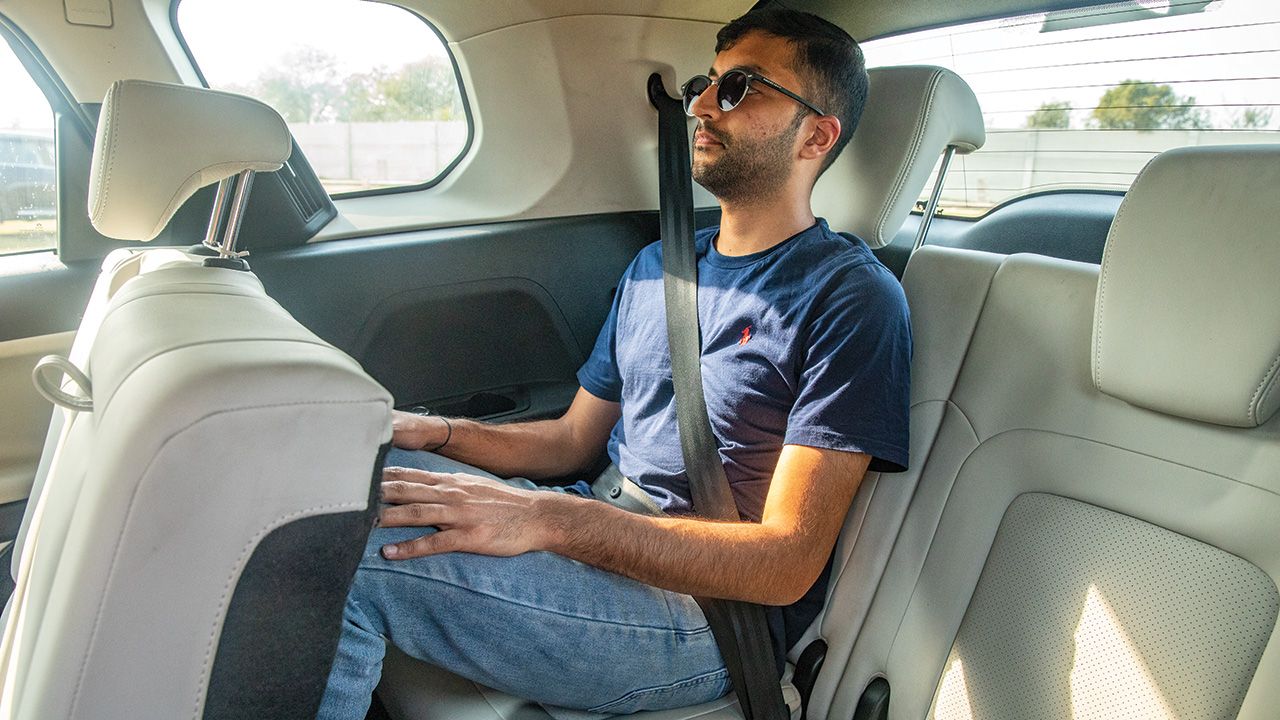
Clamber in and settle down in the Safari’s third row, and you’ll realise that while the knee-room and headroom are fairly good, you still have that feeling of being in a closed-in space, owing to the knees-up seating position and a tightly-wrapped cabin. The high-mounted AC vents, fan speed controls, and two USB Type-A ports make up for some of the discomfort. But still, the Safari’s rear seat is not a happy place to be in, especially for adults. Not a great start, huh?
Things get slightly better in the back of the XUV700. The seat tumbling mechanism requires a bit more effort than that of the Safari, but it’s marginally easier to squeeze through to the last row. That said, headroom is at a serious premium here. Anyone over 6 feet will leave their hair oils on the roof liner. The knee-room is not bad though – I could fit a finger between my knees and the second row – and the seating position isn’t as low as the Safari’s. The XUV also has more sense of space. Like the Safari, the XUV’s last row also has AC vents and fan speed controls, but there are no USB ports here – just a single 12-volt outlet.
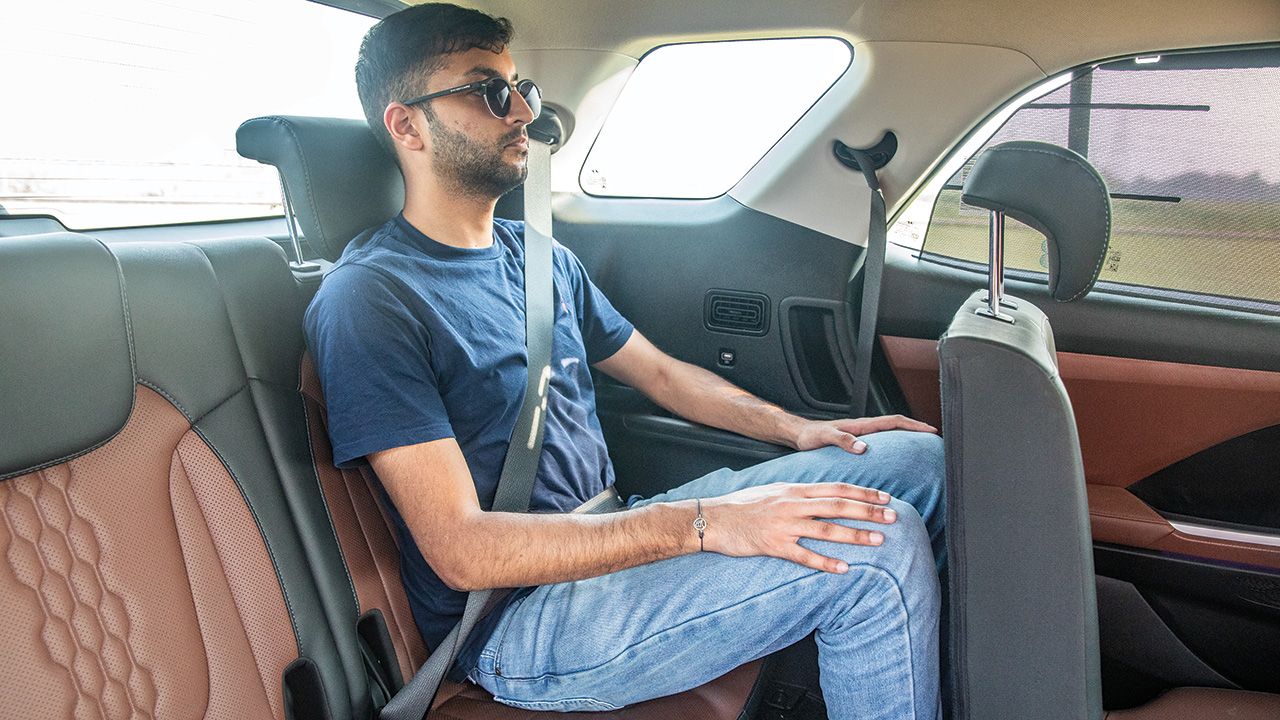
The Alcazar is next on the list, and as far as access to the third row is concerned, it is surprisingly better than the other two SUVs. The door aperture is wide and the second-row tumbles far enough to leave enough room for easy ingress. Plus, there’s a recessed handle of sorts that you can use to reduce the effort of getting in. Nice.
Space is nice here as well. The Alcazar offers considerably more headroom than the XUV, and knee-room is better too – there was about an inch between my knees and the second row, which deserves a thumbs-up. So too does the seating position. You sit with your knees pointing almost straight ahead and not at the sky. The Alcazar also gets niceties like AC vents and fan-speed controls, along with two USB Type-A ports. Before we move ahead, I must point out that the Alcazar’s third row is well sculpted and quite pleasant, even for long journeys.
Finally, it’s time to meet the new kid on the block – the Carens. Straight off the bat, I can tell you the third row is very spacious. Knee-room is almost identical to the Alcazar, while the headroom is enough to easily accommodate people with freakishly tall upper bodies. The Carens’ electronic one-touch tumble for the second row is perhaps its best feature and makes getting into the third row easy-peasy, and getting out doesn’t require you to cry for help from second-row passengers. You can, literally, get out of the third row at the press of a button. The Carens does miss out on fan speed controls at the back and the lack of a panoramic sunroof, which the other three have, robs it of that feeling of airiness. It does have two USB Type-C ports though, which are welcome additions. Now that we’ve covered the third row, it’s time to move ahead. Because, as crucial as third-row space is in these six- and seven-seaters, it’s the second-row that will be used most often.
Second Row
And here too, the Carens performs well. There is a fan-speed control for second-row passengers, along with a USB Type-C port. The window blinds help keep the sun out, and the captain seats slide forward and back, as well as recline. You only need a neck pillow to get some good sleep back here. Some of the knee-room, however, is taken up by the air purifier on one side and the picnic tables on the other – both of which are a bit unnecessary, if you ask me. And, while comparing the comfort of these captain seats directly with the bench of the SUVs here isn’t fair, I must add that I have sat in the seven-seat variant as well, and its second row is also a nice place to be.
In the Alcazar, the sense of space is elevated by the panoramic sunroof. The seats are comfortable and the absence of a bulky air purifier allows the driver-side passenger to enjoy a bit more knee-room. There’s a picnic table on both sides here, which are more useful than the single one in the Kia. The Alcazar is also available as a six-seater, which comes with a central console between the captain seats, with a built-in wireless charger – a pretty cool feature, I’d say. That said, the bench setup here can also slide forward and back, and recline to some extent.
The same, however, can’t be said about the XUV’s second row which lacks the sliding function, though it can recline. Knee-room is better than the Koreans’, and headroom is ample for taller passengers as well. The soft upholstery, sculpted seats, USB Type-C port, and panoramic sunroof together make it the nicest second-row bench in this test. That said, the XUV is also the only one here that isn’t available with split captain seats in the middle. Boo-hoo.
The Safari one-ups it in that regard, with captain seats that are supportive and high enough to offer a commanding view ahead. But what we have here is the seven-seat variant which also scores well in terms of knee-room and headroom. The AC vents are mounted on the B-pillar, which is clever, but the Safari misses out on charging ports back here and, like the Alcazar and XUV, you’ll have to tell your driver to change the fan speed. But what if you’re not interested in sitting in the back?
Daily Drivers
Well, then I can tell you that the XUV700 is definitely the nicest to drive of the lot. The 197bhp and 380Nm from its 2.0-litre turbo-petrol will make all seven of you smile, and the automatic gearbox is smooth and slick. The XUV’s ride is soft enough to keep minor imperfections away and has the ability to iron out all the potholes you forgot to brake for. It does have a bit of body roll, given its size, but it isn’t too bad. Overall, the XUV’s driving experience is very impressive. And the more you drive its rivals, the better the XUV feels.
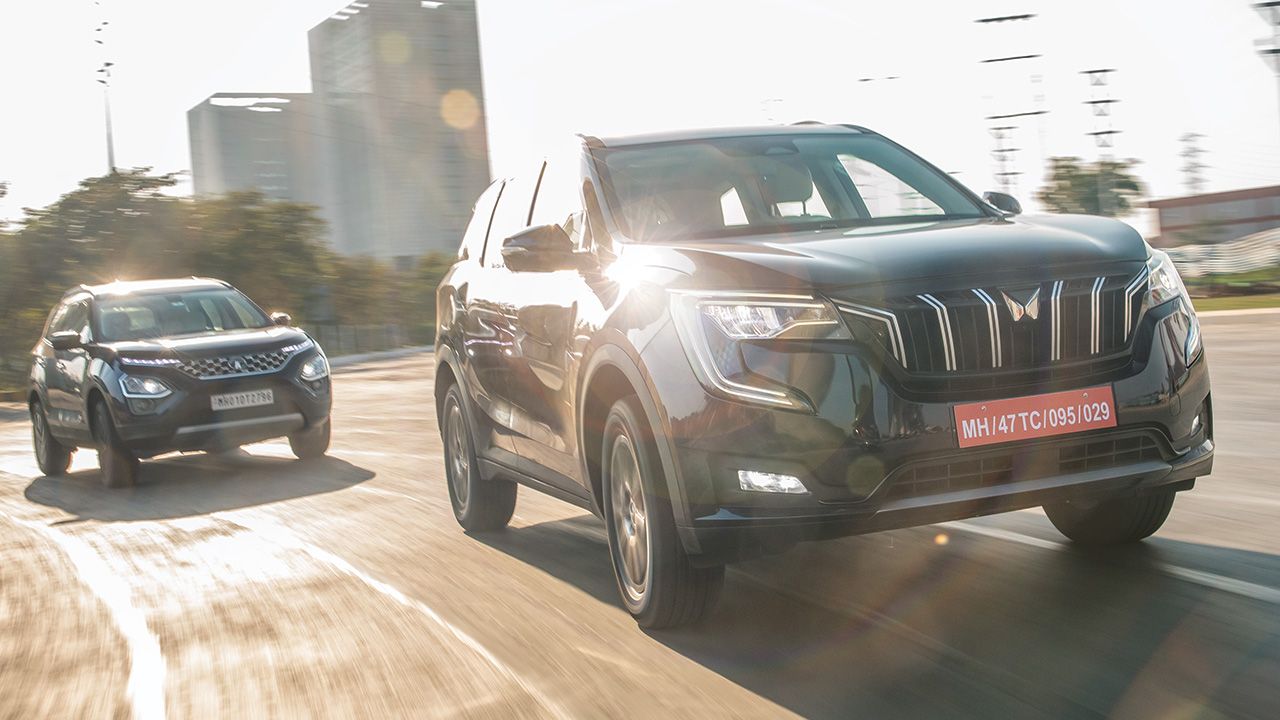
The Safari isn’t nearly as quick to get a move on and, annoyingly, the automatic gearbox drops revs as soon as you lift off. This might boost fuel economy but eliminates engine braking. The 2.0-litre diesel, with its 168bhp and 350Nm, is strong and won’t feel out of breath at highway speeds, even with a full house. But what lets the driving experience down is the steering. Funnily enough, it lightens up as the speed increases and is heavier at low speeds. The Safari does redeem itself with its ride quality though. The Land Rover-derived chassis and the suspension setup is the real-world manifestation of the word solid. Any pothole. Any speed. The Safari powers through it all. Sometimes, you may even hear it say ‘that’s all?’ I wish Tata had equipped it with an all-wheel-drive system to make it a proper off-roader but, as long as you don’t go dune bashing, the Safari can handle the rough-stuff like nothing else here. Especially the Alcazar and Carens.
Yes, the former is pitched as an SUV and is perfectly happy tackling bumps and rough patches, but you still need to proceed with caution. While the Safari allows you to close your eyes and smash through anything, hitting deep potholes at high speeds in the Alcazar will make you shut your eyes in pain. But as long as you’re driving on a well-paved surface, the Alcazar is happy. It also remains fairly planted at high speeds, which can be easily achieved, thanks to the 1.5-litre diesel’s 113bhp and 250Nm. The six-speed manual is slick, and the engine is refined as well. The Alcazar suffers from understeer though and isn’t as eager to surge forward as the Safari and XUV700 when fully loaded with people.
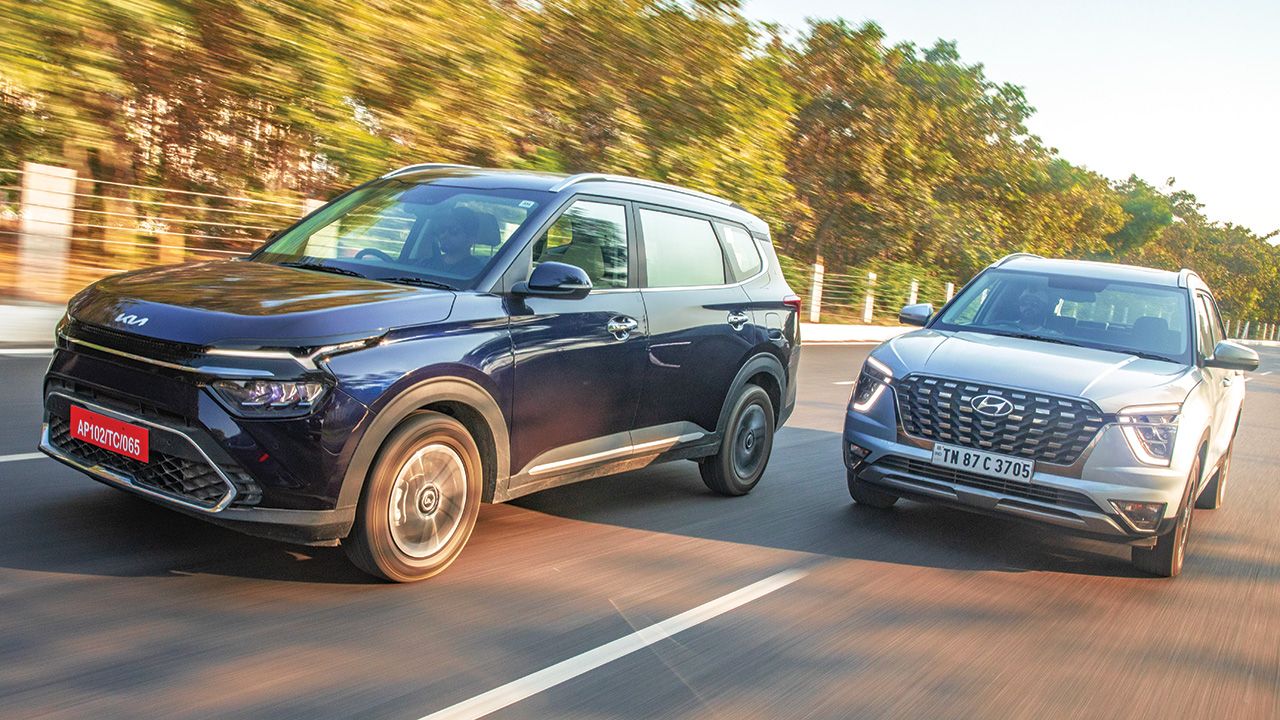
The Carens gets the same 1.5-litre diesel unit as the Alcazar, with identical power and torque figures. The one you see on these pages is equipped with a 6-speed automatic, which makes the engine feel a touch more responsive. There are also paddle shifters for manual control, by the way. One of the most surprising aspects of the Carens is its ride quality. Throw the MPV tag out the window because the Carens can take a beating! The suspension makes virtually no noise, even over a consistently bad stretch of road. The ground clearance is good enough unless you’re being foolish, and the Carens corners well for such a long MPV. There is a bit of body roll, but it is well controlled and the Carens doesn’t feel out of its depth when pushed. It won’t make you feel like the king of the road like the Safari or the XUV, but you can have fun behind the wheel of the Carens.
Verdict
So, which one should you buy? Let’s start with the Alcazar. It does a lot of things well – it’s got a long equipment list, a large 10.25-inch infotainment screen, a digital instrument cluster, ambient lighting, and a (nice) Bose sound system. It drives well too. But neither does it feel as robust as the Safari or the XUV, nor does it provide as much comfort as the Carens. And the fact that it is priced higher than the Kia doesn’t help its case either.
Then comes the Safari. It’s easily the most robust-feeling in this test, and it is well kitted out too – the higher-spec variants come with wireless Apple CarPlay and Android Auto, as well as ventilated seats. However, the poor steering calibration, the small, low-res infotainment screen, and the overall plastic quality give the Safari some room for improvement.
The XUV700 pulls ahead here. It’s the most expensive at the top, but in all honesty, it feels every bit as expensive, if not more. The Sony sound system is brilliant. Really brilliant! The screens are crisp and responsive, materials in the cabin feel a class apart and the feature list is the only thing longer than its waiting periods. So, if you’re looking for something to drive your family around in, the XUV would be our recommendation. If you’re ready to stand in line for your chance to get one.
Finally, we have the Carens. It’s well equipped, with a 10.25-inch central screen, ventilated seats, Bose speakers, and a sunroof, among other features. It also uses premium materials in most places, and the fact that you can get the base-spec variant for just ₹8.99 lakh and the top-end variant for ₹16.99 lakh – a whole ₹6.8 lakh less than the top-spec diesel XUV700 – makes it our choice if you’re looking for an affordable and comfortable way to ferry six or seven people. It turns out, Kia is not following trends. It is setting them.
- Kia Carens
- Mahindra XUV700
- Tata Safari
- Hyundai Alcazar
Engine: 1,493cc / Four-Cylinder / Turbocharged
Fuel: Diesel
Transmission: 6-Speed Automatic
Power: 113bhp @ 4,000rpm
Torque: 250Nm @ 1,500 – 2,750rpm
Price: ₹16.99 Lakh (Ex-Showroom)
X-Factor: It’s comfortable, packed with features, well-priced, and spacious – what more do you need?
| Pros | Cons |
Engine: 1,997cc / Four-Cylinder / Turbocharged
Fuel: Petrol
Transmission: 6-Speed Automatic
Power: 197bhp @ 5,000rpm
Torque: 380Nm @ 1,750 – 3,000rpm
Price: ₹22.04 Lakh (Ex-Showroom)
X-Factor: Premium and feature-loaded, the XUV700 will also keep you smiling with a punchy engine.
| Pros | Cons |
Engine: 1,956cc / Four-Cylinder / Turbocharged
Fuel: Diesel
Transmission: 6-Speed Automatic
Power: 168bhp @ 3,750rpm
Torque: 350Nm @ 1,750rpm
Price: ₹22.08 Lakh (Ex-Showroom)
X-Factor: The Safari’s ability to flatten road imperfections makes it a terrific choice for highway mile-munching.
| Pros | Cons |
Engine: 1,493cc / Four-Cylinder / Turbocharged
Fuel: Diesel
Transmission: 6-Speed Manual
Power: 113bhp @ 4,000rpm
Torque: 250Nm @ 1,500 – 2,750rpm
Price: ₹18.66 Lakh (Ex-Showroom)
X-Factor: A jack of all trades, the Alcazar will probably edge past all its rivals in terms of sales figures.
| Pros | Cons |
Read more:



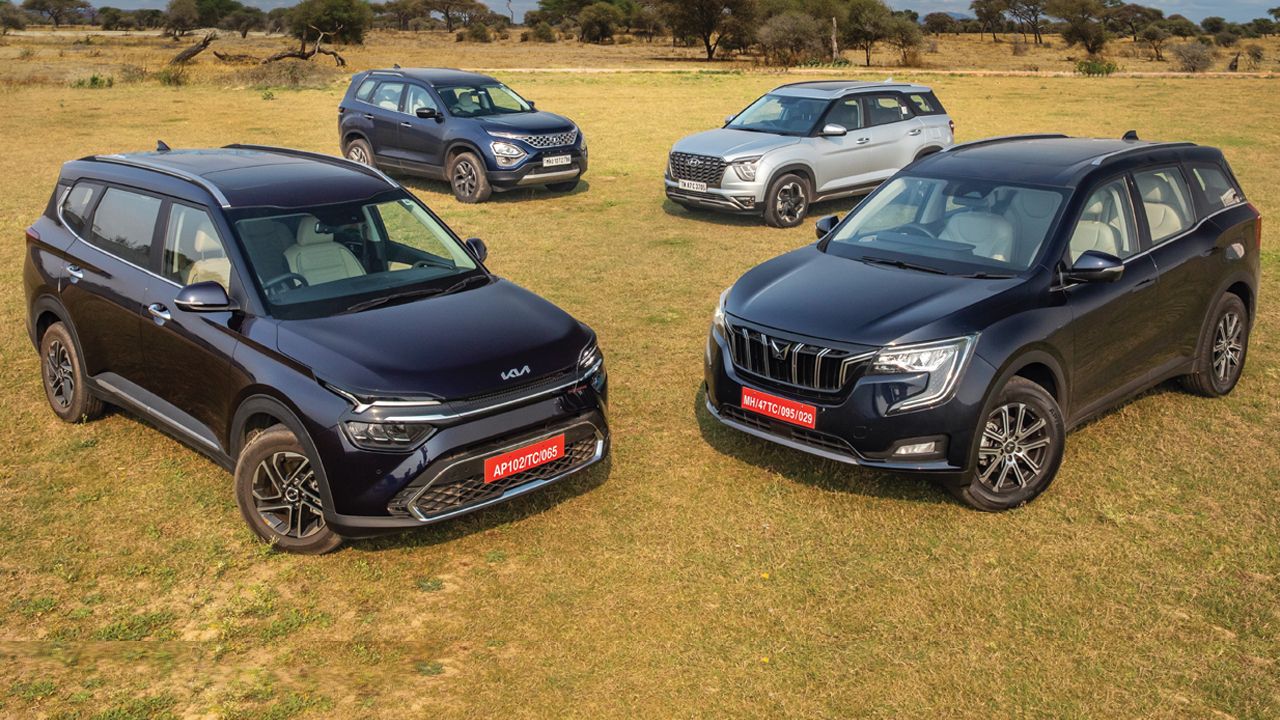
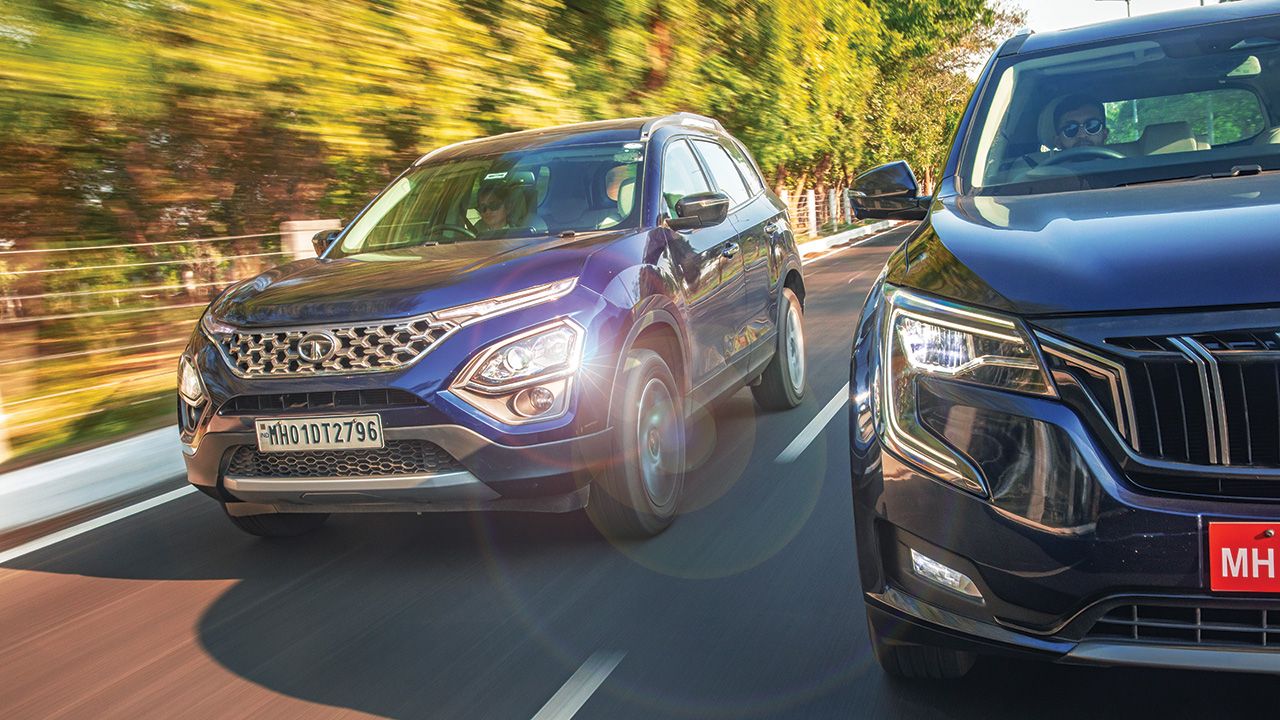
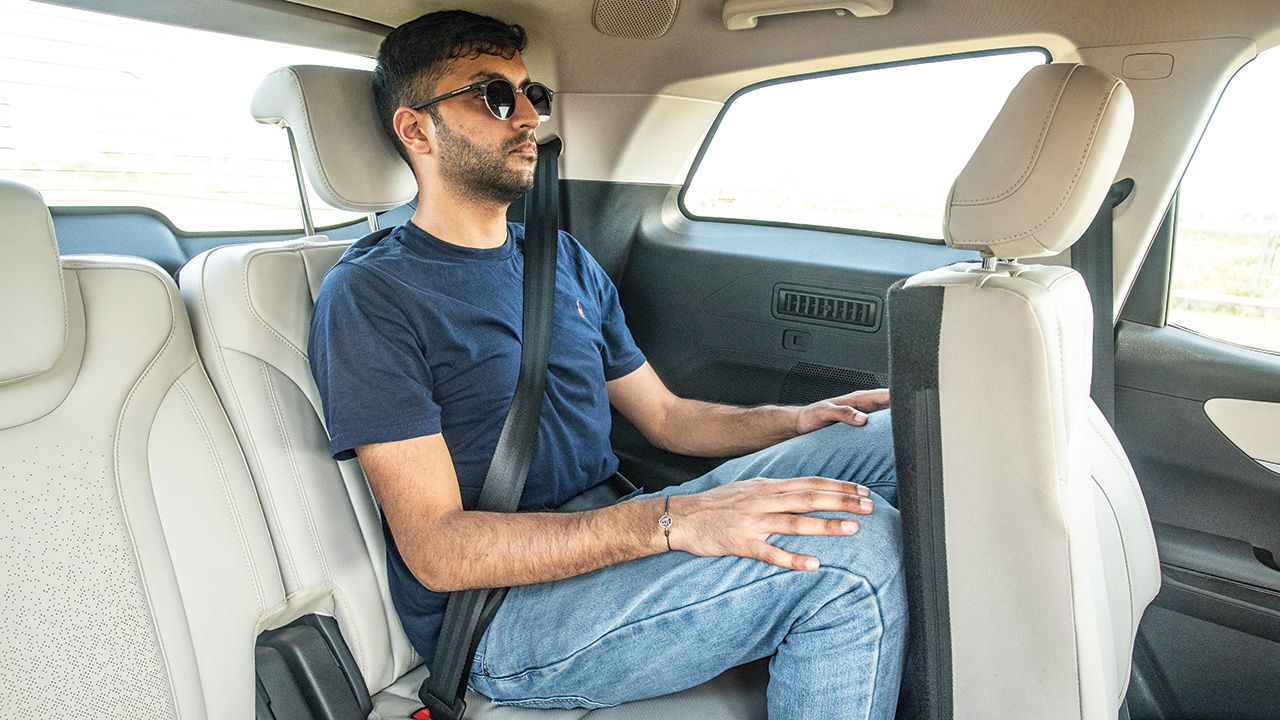

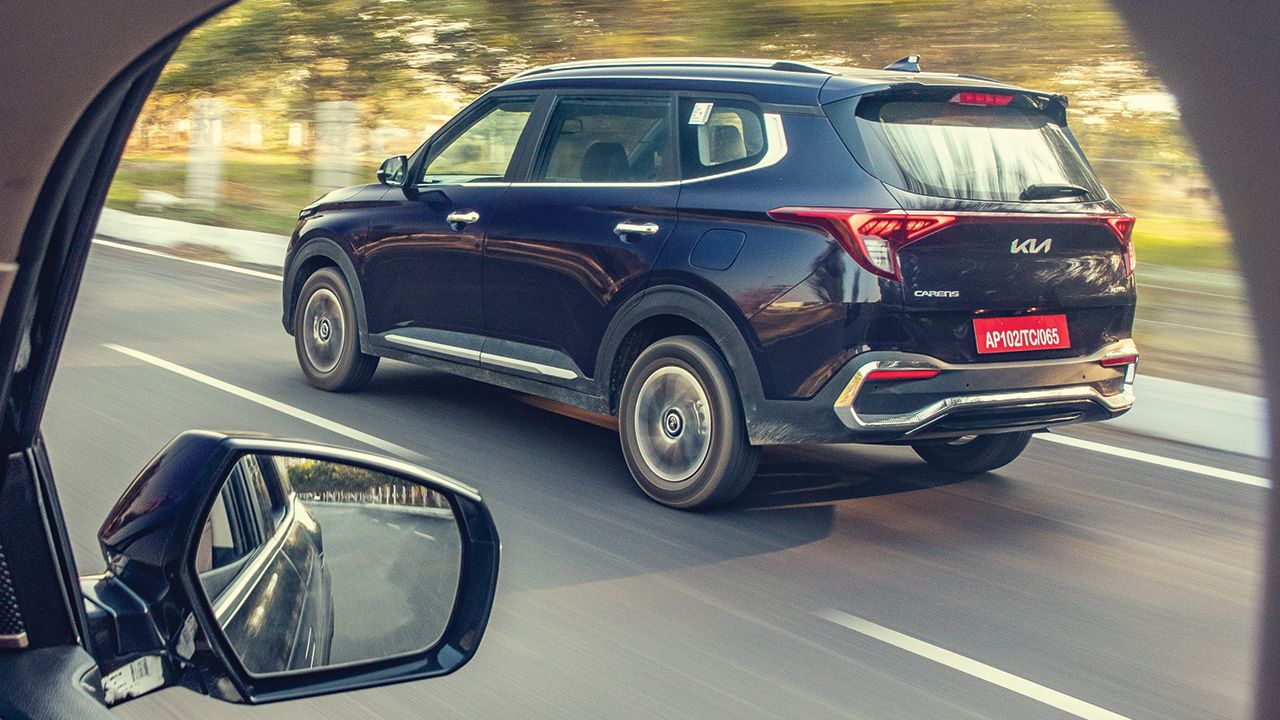
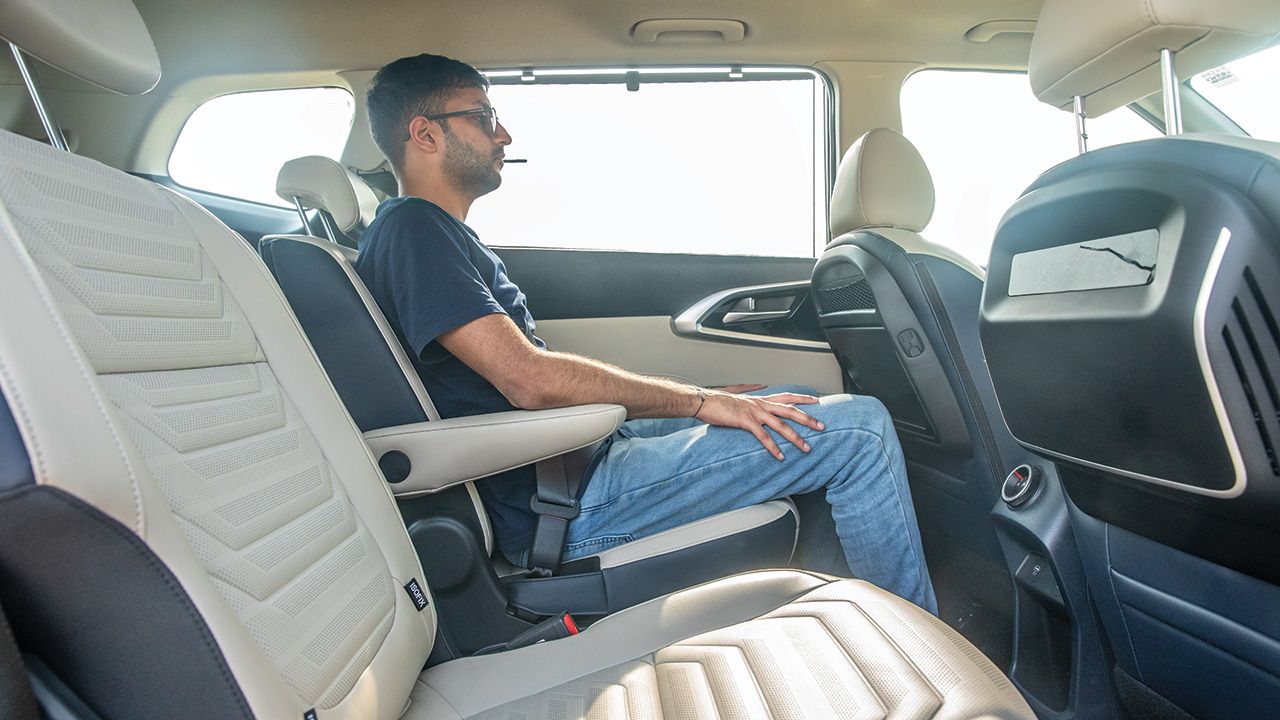
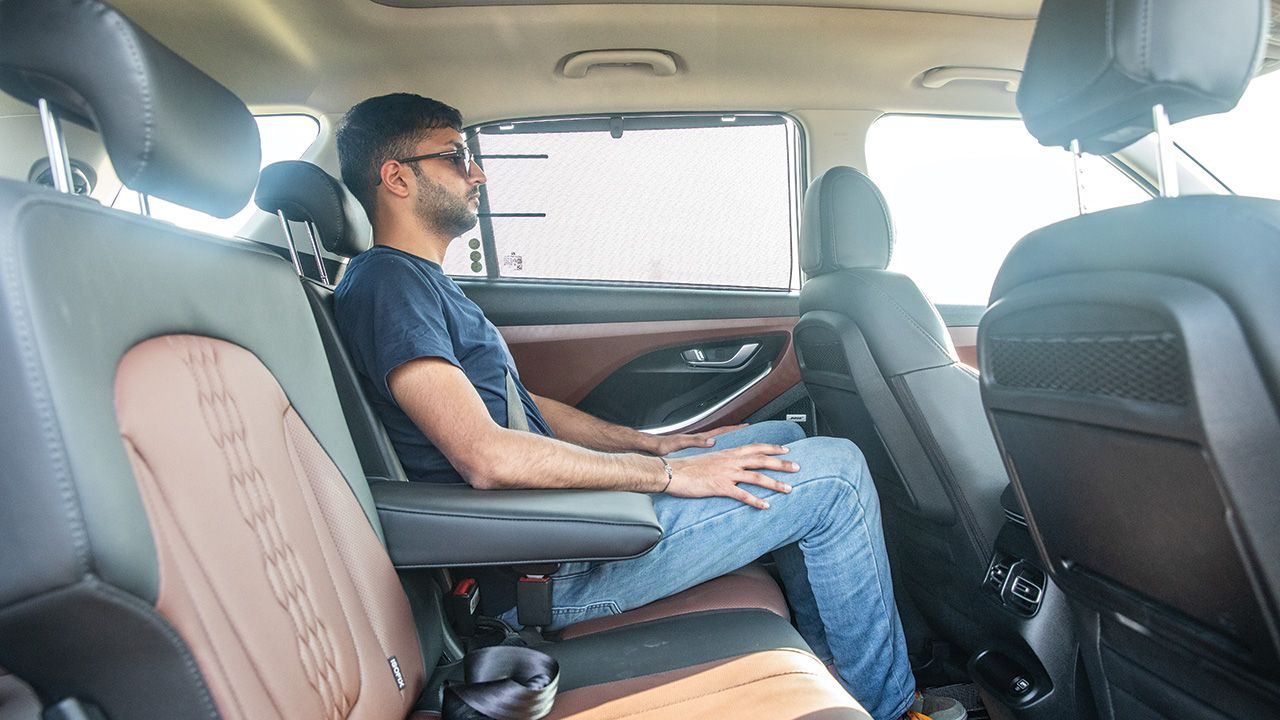
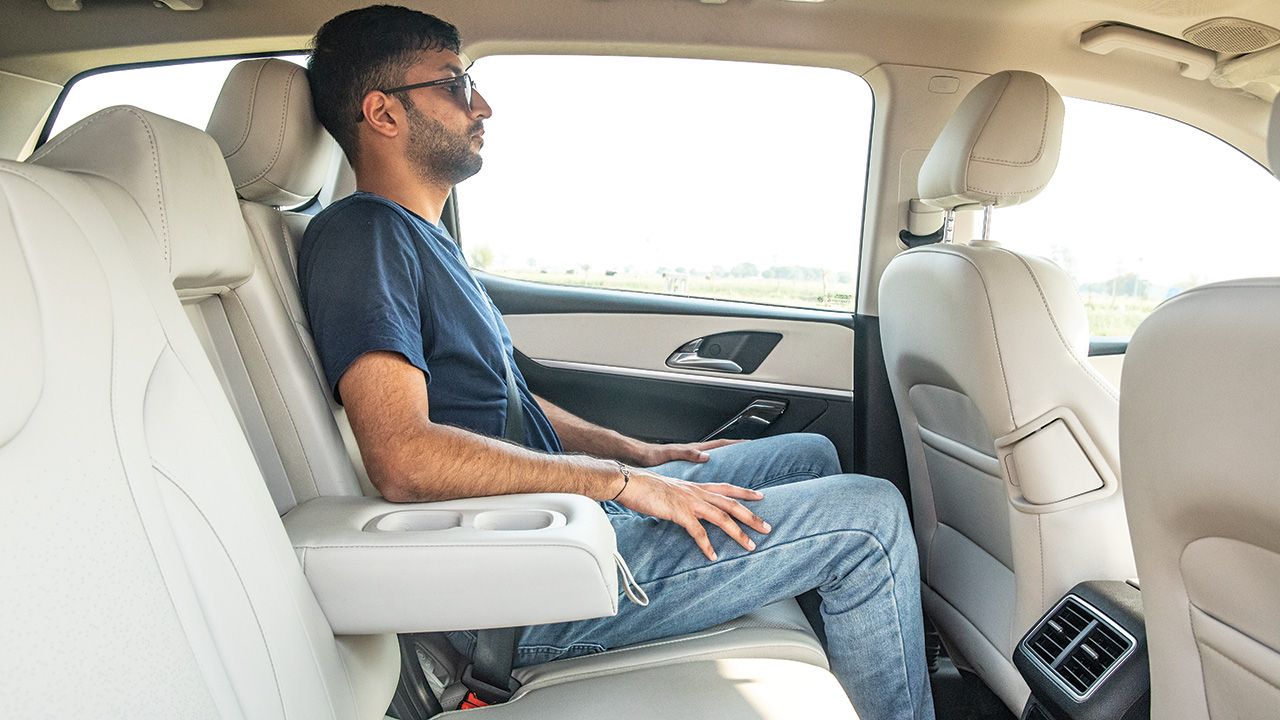
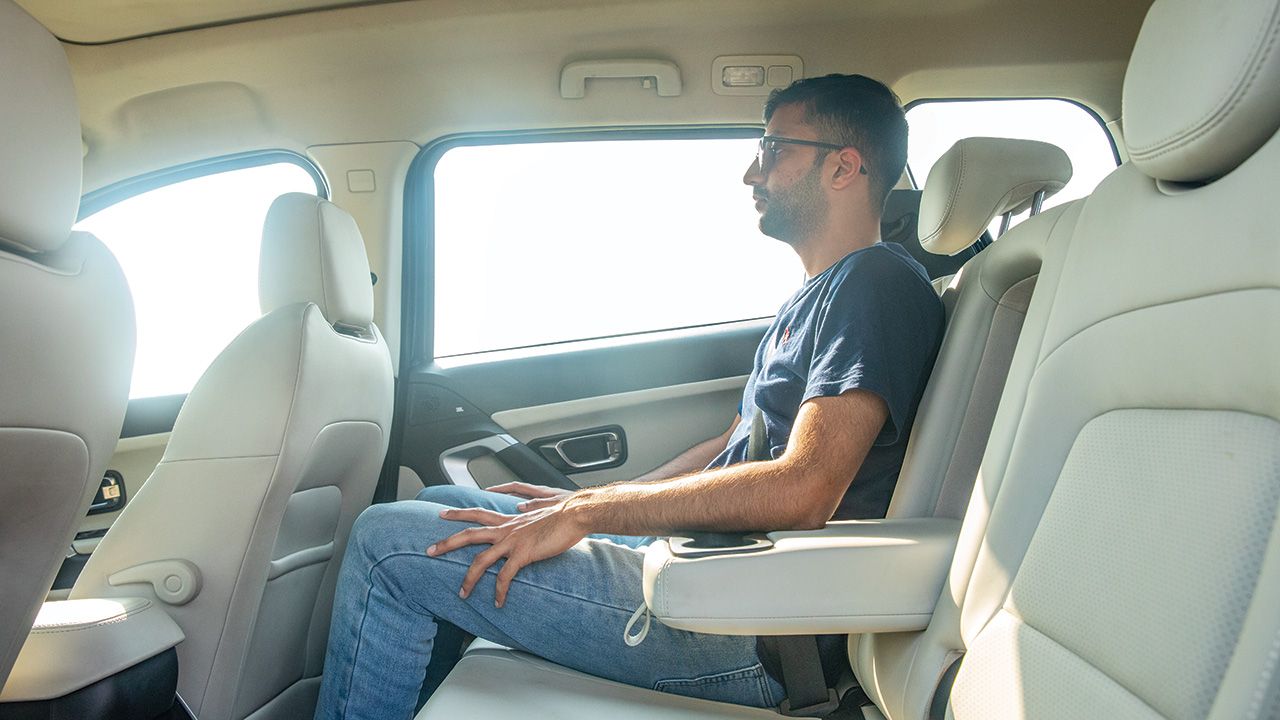
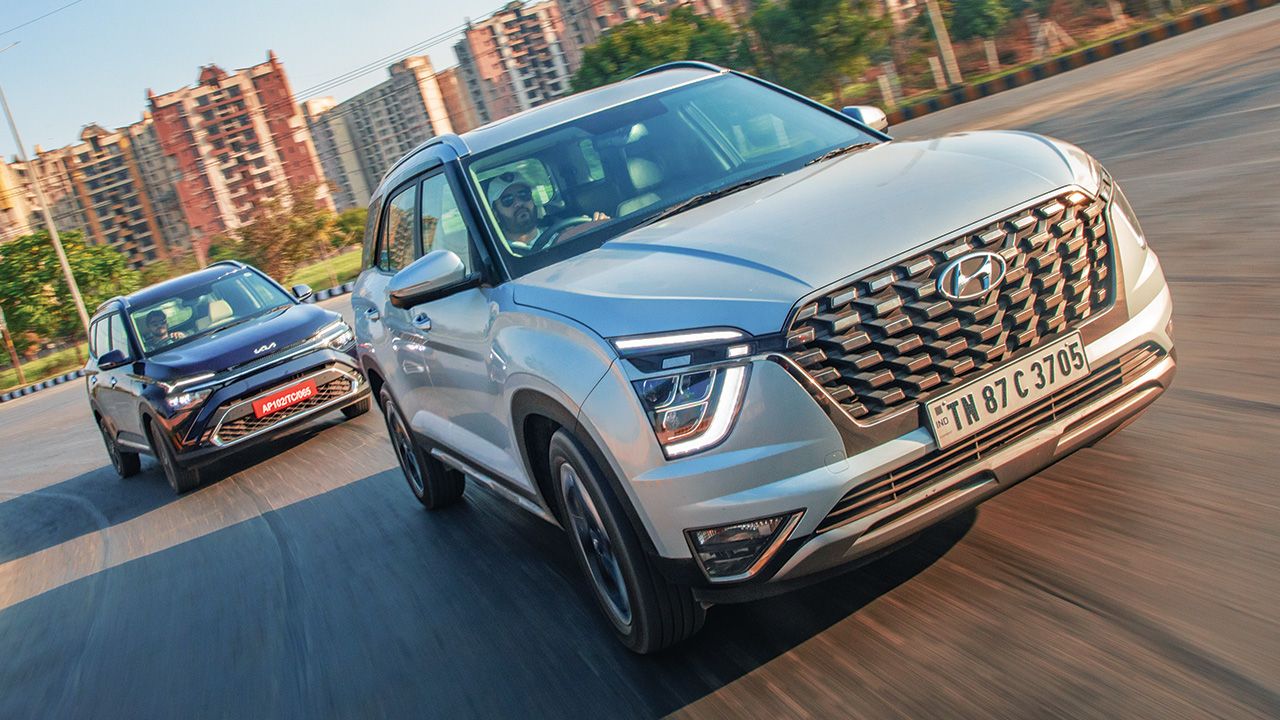
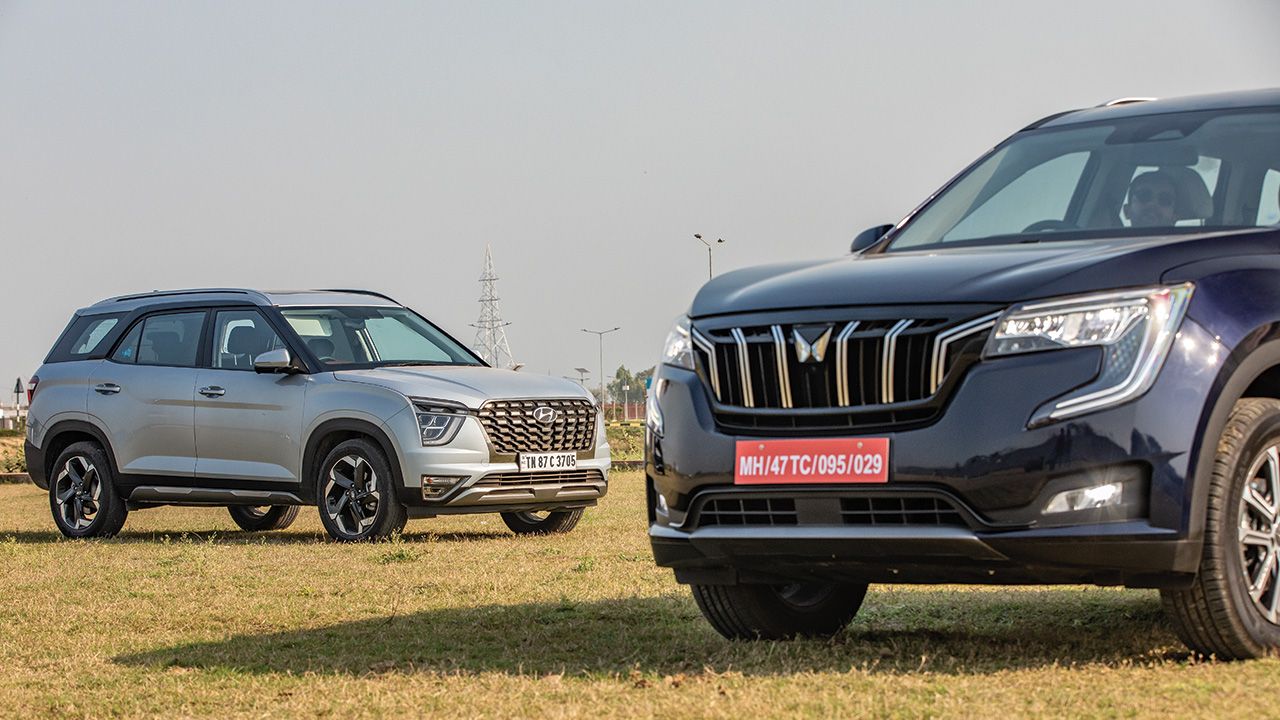




















Write your Comment